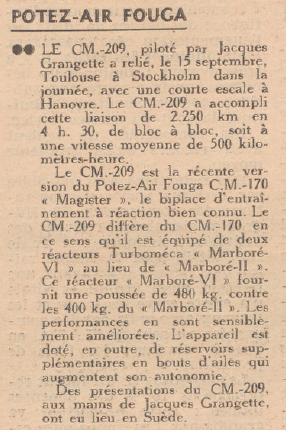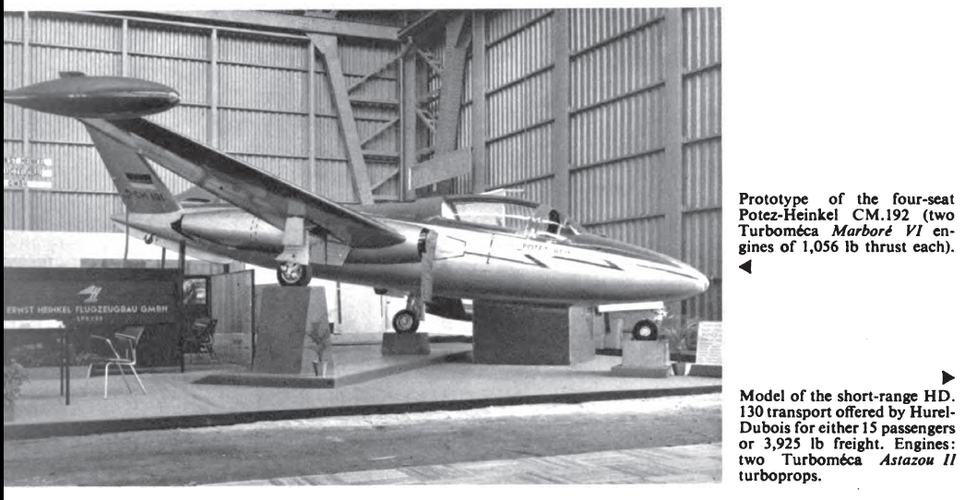- Joined
- 25 July 2007
- Messages
- 4,299
- Reaction score
- 4,193
Thanks Hesham. Was this CM.180 'testbed' actually built or did it remain a project?
@éro-Index lists a 'CM 180 R' as being mentioned in Aviation Magazine. Just what this CM.180R was to be a testbed for is a bit of a puzzle ... assuming that, like the CM.88 Gemeaux, the CM.180R was to be a testbed for Turbomeca.
It makes sense that the single engine mounted above the fuselage would produce somewhere in the range of the 1,760 lbf combined thrust of a standard Magister. The Turbomeca Aubisque put out 1,543 lbf but, with first run in 1961, seems a little late. As for other French engine makers, AFAIK, SNECMA's smallest 1950s turbojet was the R.105 Vesta producing 3,308 lbf ... which doesn't seem very probably either.
All a bit of mystery ???
@éro-Index lists a 'CM 180 R' as being mentioned in Aviation Magazine. Just what this CM.180R was to be a testbed for is a bit of a puzzle ... assuming that, like the CM.88 Gemeaux, the CM.180R was to be a testbed for Turbomeca.
It makes sense that the single engine mounted above the fuselage would produce somewhere in the range of the 1,760 lbf combined thrust of a standard Magister. The Turbomeca Aubisque put out 1,543 lbf but, with first run in 1961, seems a little late. As for other French engine makers, AFAIK, SNECMA's smallest 1950s turbojet was the R.105 Vesta producing 3,308 lbf ... which doesn't seem very probably either.
All a bit of mystery ???

















![Aviation_magazine___président-directeur_général_[...]_bpt6k5323231f_10.jpeg](/data/attachments/255/255802-8e95f2e6f7e92071045365dc1cad1352.jpg)


